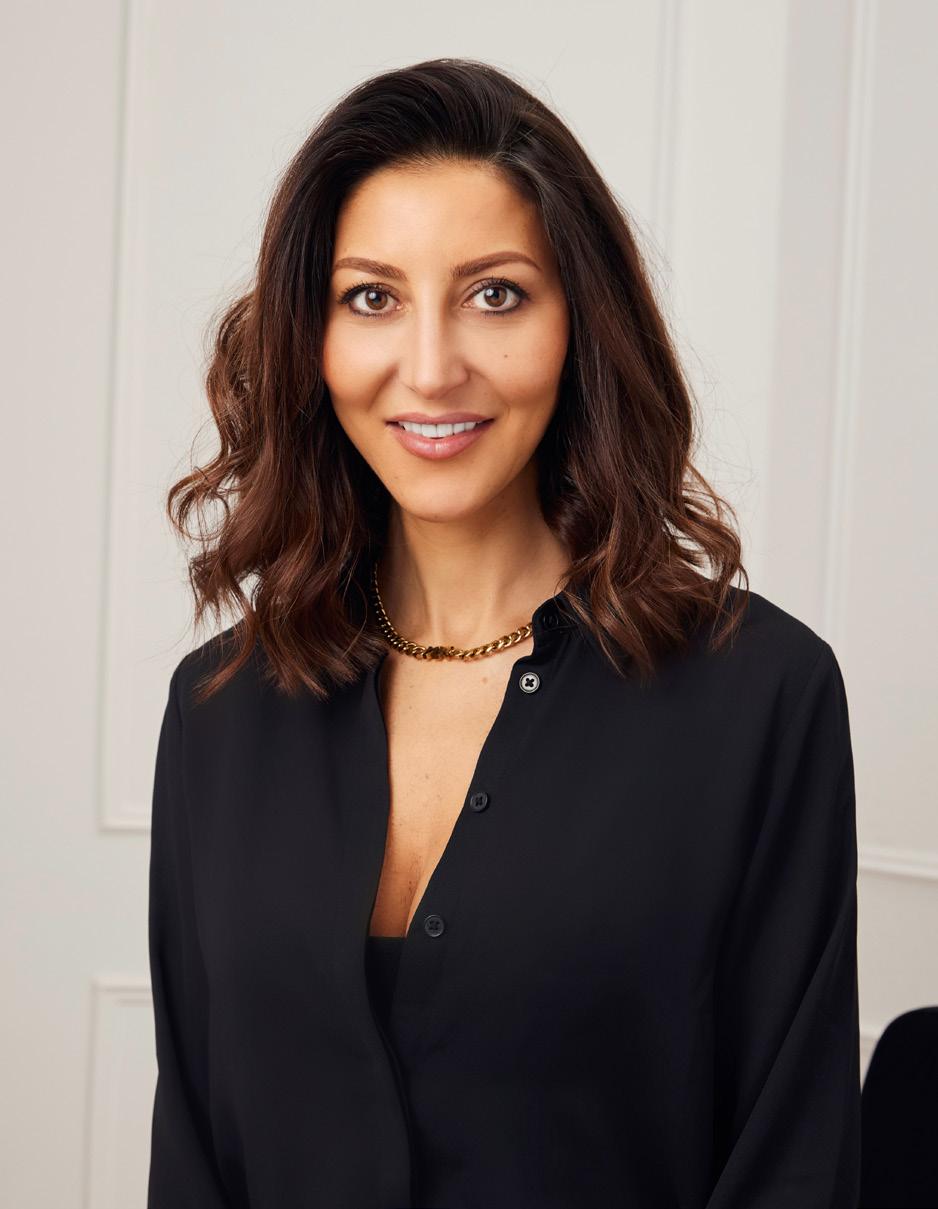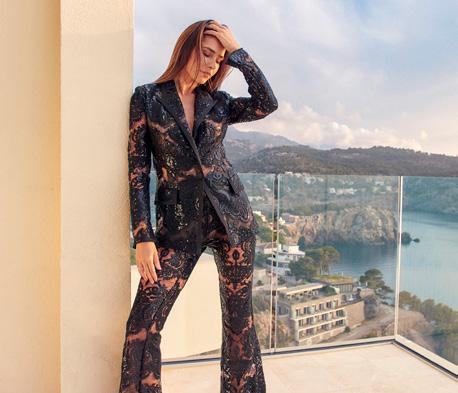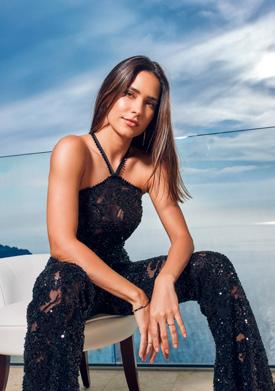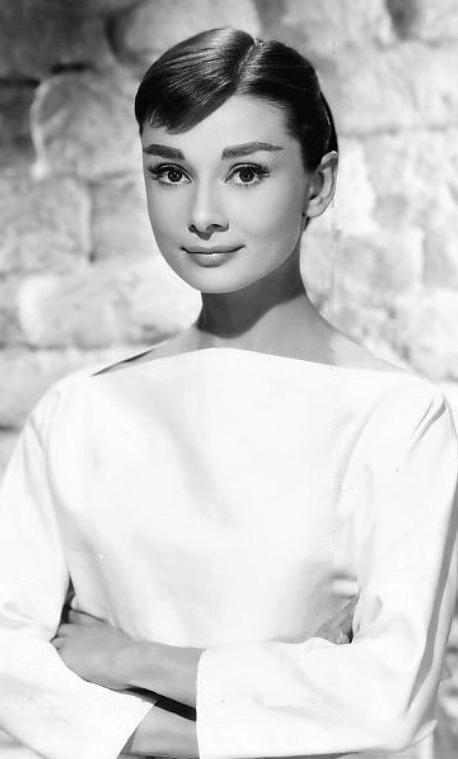
7 minute read
TEAM PLAYER
International England Hockey player turned fashion designer, Nadine Merabi, Cofounder and Creative Director of her namesake luxury ready-to-wear brand, is empowering women through fashion while celebrating her Lebanese heritage.
BY RAWAN HASSAN
Advertisement
Direct-to-consumer glam fashion brand, NADINE MERABI, marked another milestone in its journey on June 14, 2023, releasing its first official resort collection following the success of its main line partywear, bridal, and recently-launched SS23 collections. With the resort collection, the brand is branching out from occasion wear to make it more wearable and inclusive. “In autumn and winter, you’ve got Christmas parties, you’ve got nice meals out with the girls where you can wear MERABIs; but in the summer, unless you were going to a wedding or a day event or a brunch, you didn’t really have an occasion,” says Nadine Merabi, Cofounder and Creative Director of her eponymous brand. “I wanted more people to experience the brand. So, the idea is to have a wider range of options.”
Trying to build stories for women, by women, to celebrate women while thinking about different prints, fabrics, and countries, the self-taught seamstress built the new multi-drop model collection piece by piece, starting with the now-released 13 styles in the Drop 2 Sol de Aqua collection. Further drops will launch across July and August 2023, while a second resort collection will be released in January 2024. “It just started and escalated to the point I had to cut the resort collection down. I had to split it, so half of it is launching next January as well because there was just too much,” says Merabi. She is also testing swimwear as well as other summer pieces. “It was about a year and a half in the making, which is a lot longer than a normal design process, but I wanted to get it right.”
A high percentage of the brand’s client base is from the U.S. and the Middle East, according to the cofounder. In 2022, international sales grew 100% to $10 million. Global sales are split 45% from the U.K., 45% from the U.S., and 10% from the wider world (mainly the Middle East). They also have customers of Middle Eastern heritage in the U.K. and the U.S. “I definitely want to explore other regions, and I think the U.S. and the Middle East are our biggest-growing markets,” says Merabi.
Over the last few years, the Middle East has been steadily leaving its mark on the global fashion scene. “The region has seen significant growth and development in its fashion industry, with a rise in influential designers, fashion events, and luxury retail destinations,” says Mohammed Aqra, Chief Strategy Officer at Arab Fashion Council “The official Dubai Fashion Week, exemplifies the expansion of the Middle East's participation in global fashion by now sharing the stage with the world's top five most significant fashion events: New York, London, Milan, and Paris Fashion Weeks.”
Having founded the brand with fellow cofounder Blue Wilson in 2010, Merabi says the business has recently grown from $2.5 million in revenues in 2020 to $20.4 million in 2021. It had over 1.2 million followers on Instagram as of June 2023. The cofounders aim to at least triple the business in the next three years.
Merabi’s journey to fashion wasn’t the most conventional. Born to a Lebanese father and a British mother, Merabi explains that her father was her biggest inspiration. “I used to look at photos of him, and he had the flared trousers and the structured tailored blazer and the flamboyant shirt, and he was quite an extrovert but in a really cool way,” she remembers. “I think people felt more confident back in the 70s to experiment with styles. They took more pride in what they were wearing.”
Despite being born in the U.K. in 1982, Merabi grew up in the shadow of war-stricken Lebanon. She was about three years old when she first went to Lebanon before returning to the U.K. due to the civil war and her father’s illness, after which she only visited the Arab country during the summer holidays. It was while she was at secondary school in the U.K. that she first discovered a talent for hockey. Her prowess at the sport won her a scholarship to the University of Bath. She was made captain and put into the North of England trials, and within two years, she was playing for England. She played for the national team until 2007. “I’m sure there are other people in the world that go through a journey not necessarily through choice but because it was what they were good at,” Merabi muses. “I never stopped long enough to think about what it is I wanted to do and what else I could be good at.”
While trying out career paths away from sports, Merabi began running and hosting events. Being on a budget and not wanting to buy the same clothes that everyone was wearing from the high street while hosting these events, she thought it couldn’t be that hard to make a dress and put the fabric together. She started experimenting with designing and making clothes, taking inspiration from her Lebanese roots. “I definitely think my heritage allows me to be more creative and think through a wider lens beyond fashion in the U.K.,” she explains. “I had my laptop on one side where I had YouTube teaching me how to do it, and I had my little sewing machine on the other side. It felt for the first time that I was doing something I really enjoyed and wanted to do.”
Her unique, glamorous designs quickly caught people’s attention, and by 2010, at the age of 29, she decided to pursue her new passion seriously, showcasing her clothes in a boutique in Manchester City Center. “I was in shock at how they just sold and how people wanted them. It was then that I realized that people wanted something different; they wanted to feel glamorous,” recalls Merabi.
She set out to fill a gap for herself and other women in a world of fast fashion and repetitive designs, making bespoke one-of-a-kind designs for the women she knew, flattering the insecurities each one had. “I would create a lot of different designs for individual women, and so I got to really understand what women liked and what they didn’t like about themselves,” says Merabi. “I’m always trying to design and create something for all different body shapes. The designs have definitely changed in that everything’s not as skin-tight, with a lot of structure and boning involved discreetly in the pieces. It’s just to try and make people feel their absolute best when they wear MERABI.”
Working alone for over six years, the brand witnessed some growth with wholesale, as well as selling to Selfridges department stores. However, Merabi needed help in pushing her brand forward. That’s where Wilson, an international business graduate with over 10 years of experience building global DTC brands, came in. She joined Merabi as a cofounder, officially establishing the NADINE MERABI brand in 2016. “We were like chalk and cheese,” admits Merabi. “We just worked really well as founders and business partners. She leaves me to be the creative director, and I leave her to be the managing director.”
Merabi has faced some challenges along the way. NADINE MERABI was hit hard by the global pandemic in 2020 as an occasion-wear brand when every occasion in the world was canceled. However, the designer quickly pivoted, releasing a selection of luxury pyjamas for women. “People still wanted to have dinners and get dressed up, but everyone was locked up in their houses, so we came up with these silk satin pyjamas with feather trims,” explains Merabi. “And now, people are going out again, they are still wearing them out in the evenings to go for dinners.”

In 2022, the brand was given the opportunity to showcase its FW22 Collection during London Fashion Week. However, London Fashion Week was postponed in the wake of Queen Elizabeth II’s death in September, followed by a 10-day mourning period. NADINE MERABI was one of the first brands to announce its move from the traditional London Fashion Week calendar, with the support of the British Fashion Council, to join the London Fashion Week City Wide Celebration four weeks later.

“Some people read my story or look at my journey and think, ‘Oh well, she was lucky, or she’s done a good thing,’ but I would describe it all as blood, sweat, and tears,” says Merabi. “People will try and put you down. I just think it’s such a shame that there are so many young women out there that have this dream and do want to create something but get held back without having the chance to achieve that.”
Noting the shift in the industry post-pandemic, and the dying fever of fast fashion, driven by the increasing popularity of e-commerce, Merabi points to the new generations and how they are pushing away from buying cheap throw-away items to luxury items.
“I think it’ll be interesting to see what happens in the next two years to fast fashion,” she says. “If you have a MERABI in your wardrobe, it’s a classic design and a memorable piece that you can keep wearing for years to come.”
The luxury sector is expected to grow from 5% to 10% in 2023, according to McKinsey’s report on The State of Fashion 2023. “The rise of brands known for their glamorous yet sustainable designs exemplifies the growing demand for fashion that is both stylish and environmentally responsible,” says the Arab Fashion Council’s Aqra. “As the luxury sector continues to grow, incorporating sustainable practices and embracing slow fashion will be crucial for brands to stay relevant and meet the evolving demands of conscious consumers.”
This sentiment is echoed by Maya Azzi, Chief Brand Officer at The Luxury Closet. “In the shift from fast fashion to slow fashion, we're seeing a rise in luxury brands entering the resale environment along with the reemergence of vintage pieces. More and more designer brands are turning towards resale and finding a fresh way to build connectivity and loyalty with customers,” she says.
Proudly a slow fashion brand, the NADINE MERABI team is now supplying pieces to a rental service called HURR to try and circulate its designs, as well as developing and working on sustainable fabrics which can be recycled, according to the cofounder. Looking ahead, Merabi is also open to branching out into the Middle East, with hopes of collaborations with designers in the region. “I think it will open up new avenues,” says Merabi, “My whole point in design is to have as many women as possible being able to wear MERABI around the world.”








